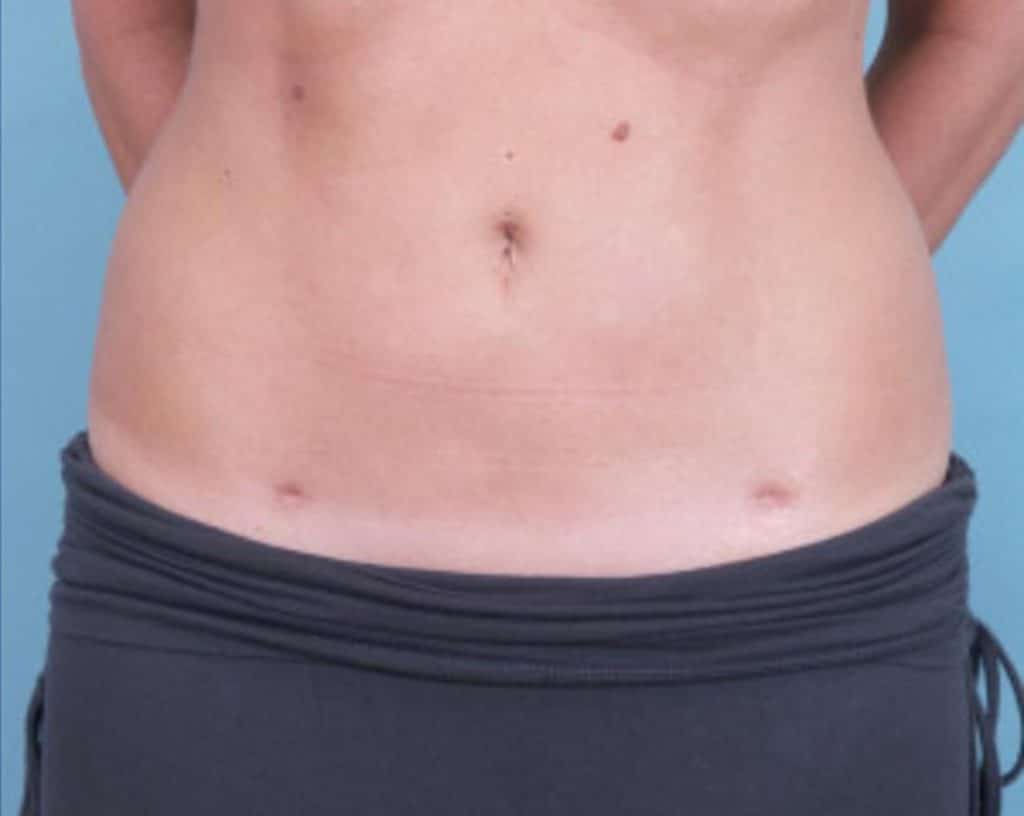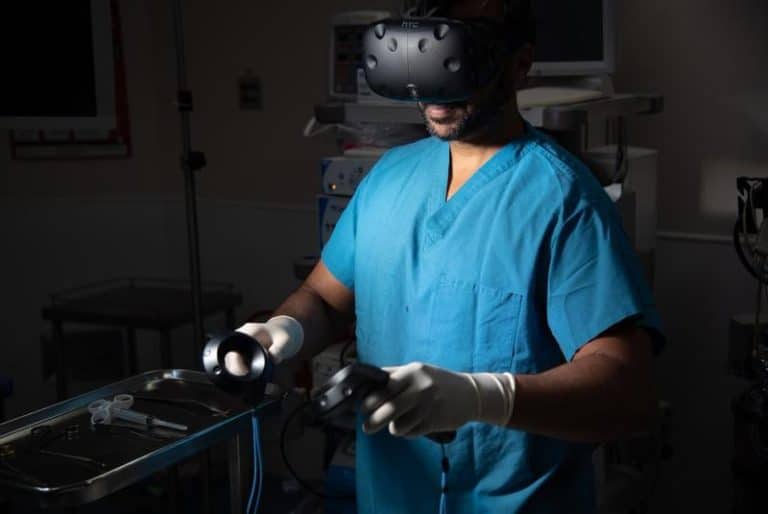Liposuction scarring is a common concern for many considering this cosmetic surgery body contouring procedure, as subsequent scars and stomach scars can occur. Understanding how scars form, including subsequent scarring from the liposuction procedure and what to expect, can ease worries about how laser liposuction and liposuction leaves effects. Scars can vary in appearance based on multiple factors, including technique, skin type, and the liposuction procedure in a specific liposuction case. The good news is that with proper care, including lipo, these scars can fade over time.
Choosing an experienced surgeon is crucial. They can minimize scarring and enhance your results. Knowing the right aftercare tips for lipo scar treatment can make a big difference too. This post will dive into the causes of liposuction scarring, ways to reduce it, and how to care for your skin post-surgery. Get ready to learn how to achieve smoother results with lipo and boost your confidence through proper scar care!
What Do Liposuction Scars Look Like
Scar Appearance
Liposuction scars can appear as very small dots. They often resemble the size of a freckle. These marks result from tiny incisions made during the lipo procedure. The surgeon places these incisions in discreet areas. This placement helps to minimize visibility.
Discoloration Factors
e patients notice discoloration around the incision site. This discoloration can vary based on skin type. For instance, individuals with lighter skin may see pink or red marks after lipo. Those with darker skin tones might experience brown or darker spots. Over time, this discoloration usually fades. The fading process can take several months.
Healing Process
The healing process affects how scars develop. Initially, scars may be raised or red. As time passes, they flatten and lighten in color. Most liposuction scars become virtually imperceptible after a year. Many people find that their lipo scars are hardly noticeable in casual settings.
Size Variation
The size of liposuction scars is generally consistent. They are small due to the lipo technique used during surgery. Surgeons use a method called tumescent liposuction. This lipo approach involves injecting fluid into the area before fat removal. It minimizes trauma to surrounding tissues. Smaller incisions lead to smaller scars.
Long-term Changes
Patients should expect changes in their scars over time. Initially, the scars may stand out more prominently. With proper care, they will gradually fade and blend with the skin tone. Sun exposure can affect scar appearance, so protection is essential.
Emotional Impact
Scarring can have an emotional impact on some individuals. People may feel self-conscious about their appearance after lipo surgery. Understanding what to expect can help ease these concerns. Many find that as scars fade, confidence returns.
Aftercare Importance
Proper aftercare plays a significant role in scar appearance. Following post-operative instructions is crucial for optimal healing. Keeping the incision clean and moisturized aids recovery. Avoiding sun exposure during the healing phase also helps prevent darkening of scars.
Common Locations for Liposuction Scars
Abdominal Scars
Abdominal liposuction is one of the most common procedures. The scars from this lipo surgery usually appear near the belly button or along the lower abdomen. Surgeons often place lipo incisions in areas where they can be easily hidden. These locations help minimize visibility after healing.
Scars may fade over time but will not completely disappear. The size of the scar after lipo depends on the amount of fat removed and the technique used. Patients should discuss potential scarring from lipo with their surgeon before the procedure.
Thigh Scars
Thighs are another popular area for typical liposuction. Scars in this region from lipo generally appear on the inner thigh or around the groin area. This placement helps conceal them under clothing.
The length of these scars can vary based on how much fat is removed during lipo. Some patients may have multiple small incisions from lipo, while others might have longer ones. Proper care during lipo recovery can also influence how well scars heal.
Flank Scars
Flanks, or love handles, are common targets for liposuction as well. Scars here are typically located just above the hips. Like other areas, surgeons aim to position these lipo incisions where they are less noticeable.
The healing process plays a crucial role in how visible these scars will be post-surgery. Patients who follow aftercare instructions often see better results. Keeping the area clean and moisturized aids in recovery.
Other Areas
Liposuction can be performed on various body parts, leading to scars in different locations. For example, arms and back are also treated with this procedure. Incisions in these areas follow similar practices: placed where they are least likely to be seen.
Patients should understand that while scarring is a part of the process, it can often be managed effectively. Discussing concerns with a healthcare provider allows for better preparation and expectations.
Factors Affecting Scarring
Several factors influence scarring after liposuction. Skin type, age, and healing capacity all play significant roles. Younger skin tends to heal better than older skin.
Surgeons also consider individual anatomy when planning incision sites. They aim to use techniques that minimize scarring as much as possible.
Factors That Affect Scar Formation
Incision Quality
Surgeons play a crucial role in scar formation. The quality of incision placement significantly affects how scars develop. A well-placed incision can minimize visible scars. Surgeons aim to create incisions in less noticeable areas. This technique helps hide scars better. If an incision is placed poorly, it can lead to more prominent scarring.
The type of incision also matters. For example, straight incisions often heal better than jagged ones. Smooth edges allow for cleaner healing and less scar tissue. Surgeons use specialized techniques to reduce tension on the skin during healing. Less tension can lead to fewer complications and better cosmetic results.
Individual Skin Type
Each person’s skin type influences healing. Some people have skin that is more prone to keloid formation. Keloids are raised scars that extend beyond the original incision line. Others may experience hyperpigmentation, where the scar area becomes darker than surrounding skin. Skin types vary based on genetics and ethnicity, affecting how scars appear.
Collagen production also varies among individuals. Collagen is essential for wound healing and scar formation. Those with higher collagen levels may heal faster and develop less noticeable scars. Conversely, lower collagen production can lead to more significant scarring.
Post-Operative Care
Proper care after surgery is vital for minimizing scars. Following post-operative instructions can greatly influence healing outcomes. Patients should keep the incision clean and dry to prevent infection. Infection can worsen scarring and lead to complications.
Applying silicone gel or sheets may help improve scar appearance over time. These treatments work by keeping the area hydrated and promoting healing. Regularly moisturizing the scar can also aid recovery.
Adhering to ideal scar care practices is essential for optimal results. Avoiding sun exposure during the healing process prevents discoloration of scars. Sun damage can lead to darker or more noticeable scars, especially on sensitive areas like the stomach.
Patients should also avoid smoking, as it can slow down healing and increase scar visibility. Smoking restricts blood flow, which is crucial for delivering nutrients to healing tissue.
Summary
In summary, several factors affect liposuction scarring. The quality of incision placement by the surgeon plays a key role in how well scars heal. Individual skin types influence how scars form and appear post-surgery. Lastly, proper post-operative care is critical for minimizing visible scars and ensuring better healing outcomes.
How Big Are Liposuction Scars
Scar Size
Liposuction scars are usually very small. They are comparable to the size of a small freckle. The incisions made during the procedure are tiny. This design helps minimize visible scarring for patients.
Scar size remains consistent across different body areas treated. Whether it’s stomach liposuction or another area, the scars will not vary much in size. Surgeons often use techniques that ensure these incisions are discreet. Patients appreciate this because smaller scars can lead to better cosmetic results.
Location Matters
The location of liposuction scars is also important. Surgeons place incisions in less noticeable areas. For instance, they may make incisions in skin folds or natural creases. This placement further reduces the chance of visible scarring.
Stomach liposuction scars can be hidden under clothing. This is a significant advantage for many individuals considering the surgery. Patients often feel more comfortable knowing their scars will not be easily seen.
Healing Process
The healing process can affect how noticeable liposuction scars become. After surgery, proper care is crucial for minimizing scarring. Following post-operative instructions helps ensure optimal healing.
Patients should avoid sun exposure on the scarred areas. Sunlight can darken scars and make them more prominent over time. Keeping the area moisturized can also support better healing.
Overall Cost Consideration
While discussing liposuction, it’s essential to consider overall costs. The overall liposuction cost includes factors like surgeon fees and facility charges. Patients should factor in potential costs related to scar management as well.
e may need additional treatments to reduce scar visibility later on. These could include laser therapy or topical treatments. Understanding these aspects helps patients prepare financially.
Emotional Impact
The emotional impact of scarring should not be overlooked. Many people worry about how they will look after surgery. Concerns about lipo scars can create anxiety before the procedure.
However, most patients find their scars heal well and become less noticeable over time. Real-life experiences show that many individuals feel satisfied with their results despite initial concerns.
Tips to Improve the Appearance of Liposuction Scars
Follow Aftercare
Surgeons provide aftercare instructions for a reason. Following these guidelines helps the body heal properly. Proper care can minimize the visibility of scars. Patients should keep the incision sites clean and dry. This reduces the risk of infection, which can worsen scarring.
Avoid exposing the scars to sunlight for at least six months. UV rays can darken scars and make them more noticeable. Wearing sunscreen is also essential when outdoors. It protects the skin and aids in healing.
Stay Hydrated
Hydration plays an important role in skin health. Drinking plenty of water helps maintain skin elasticity. Well-hydrated skin heals faster and better. Aim for at least eight glasses of water daily, especially after surgery.
Fruits and vegetables with high water content also help. Foods like cucumbers, watermelon, and oranges support hydration. A balanced diet rich in vitamins C and E can further improve skin recovery.
Use Silicone Gel Sheets
Silicone gel sheets are effective for scar management. They can be used once incisions have fully healed. These sheets create a protective barrier over scars. They help retain moisture and promote healing.
Research shows that silicone sheets can reduce scar thickness and color. Regular use over several weeks leads to better results. Patients should consult their surgeon before starting this treatment.
Consider Massage Therapy
Gentle massage around the scar area may enhance healing. This technique improves blood flow and breaks down dense tissue. Start massaging only after receiving medical clearance from a doctor.
Use a fragrance-free moisturizer during the massage. This prevents irritation while promoting smooth skin texture. Consistency is key, so try to massage daily for optimal results.

Explore Topical Treatments
Various topical treatments exist for improving scar appearance. Creams containing ingredients like vitamin E or aloe vera may help soften scars. However, scientific evidence on their effectiveness varies.
Always consult with a healthcare provider before using new products on healing skin. Some treatments can cause allergic reactions or irritations.
Monitor Your Health
Overall health impacts how well scars heal. Conditions such as diabetes can slow down recovery times. Regular check-ups with a healthcare professional ensure that any underlying issues are addressed.
Maintaining a healthy lifestyle supports overall recovery from liposuction. Exercise regularly, eat well, and avoid smoking to promote good circulation and skin health.
Effective Treatments for Liposuction Scars
Laser Therapy
Laser therapy can significantly improve the appearance of liposuction scars. This method uses focused light to target scar tissue. It helps to break down the scar’s structure, promoting new skin growth. Many lipo patients see a noticeable reduction in redness and texture after treatment.
Different types of lasers are available. Some target pigment changes, while others focus on smoothing out the skin. Results vary based on the type of laser used and individual skin responses.
Chemical Peels
Chemical peels offer another effective option for treating liposuction scars. This procedure involves applying a chemical solution to the skin. The solution removes the outer layer, revealing smoother skin underneath.
Peels can reduce visibility and improve overall skin tone. They are especially useful for superficial scars. Lipo patients may need multiple sessions for optimal results.
Microdermabrasion
Microdermabrasion is similar to chemical peels but uses a different approach. This technique exfoliates the skin using tiny crystals. It removes dead skin cells, helping to fade scars over time.
Many cosmetic surgeons recommend microdermabrasion for lighter scars. Patients often experience minimal discomfort and downtime with this treatment. Regular sessions may yield the best outcomes.
Cryotherapy
Cryotherapy is an innovative option for treating keloid scars. This method involves freezing the scar tissue with liquid nitrogen. The cold temperature reduces blood flow to the area, which can shrink the scar over time.
This approach is less common but can be effective for specific cases. Some lipo patients report positive results after several treatments.
Specialized Scar Removal Treatments
Specialized scar removal treatments are also available for those looking to minimize liposuction scars. These treatments often involve advanced techniques tailored to individual needs. Options include steroid injections and silicone gel sheets.
Steroid injections can help flatten raised scars, while silicone sheets keep the area hydrated and promote healing. Consulting with a liposuction expert is crucial to determine the best course of action.
Scar Revision Surgery
Scar revision surgery is an option for more severe cases. This procedure aims to remove or alter the scar entirely, creating a less noticeable mark. Surgeons use various techniques based on scar type and location.
Patients should discuss their options thoroughly with their cosmetic surgeon before deciding on surgery.
Common Concerns About Liposuction Scarring
Visible Scars
Many patients worry about having visible scars after liposuction surgery. Surgical scarring is a common concern. The incisions made during the procedure can leave marks on the skin. These marks may be more noticeable for some individuals than others. Factors like skin type and healing ability play a role in scar visibility.
Liposuction results depend not only on fat removal but also on how well the skin heals. Some patients experience saggy liposuction scarring, which can be frustrating. Smooth skin is often desired after cosmetic procedures. The goal is to achieve a natural look without prominent scars.
Discreet Incisions
Surgeons aim to make discreet liposuction incisions whenever possible. These incisions are strategically placed to minimize visibility. Often, they are located in areas that are less exposed. This technique helps reduce the appearance of scars during recovery.
Many liposuction procedures use small incisions. Smaller incisions generally lead to less noticeable scars. Patients should discuss incision placement with their surgeon before the operation. Understanding where the cuts will be made can ease concerns about scarring.
Recovery Time
Liposuction recovery varies among patients. Many liposuction patients report different experiences based on factors such as age and health. Recovery time impacts how quickly the body heals and how scars develop. Following post-operative care instructions can help improve healing.
Patients may need several weeks to fully recover from liposuction surgery. During this time, it is essential to monitor the incisions for signs of infection or complications. Proper care can lead to better overall results and less visible scarring.
Scar Management Techniques
e individuals seek methods to make scars discreet and almost invisible after surgery. Options include topical treatments, silicone sheets, and scar removal surgery if necessary. These methods can help reduce the appearance of scars over time.
Many medical professionals recommend waiting until the scars mature before starting treatment. This usually takes about six months after surgery. Patience is key in achieving optimal results.
Emotional Impact
Concerns about scarring can lead to emotional distress for many patients. The desire for smooth, less visible scars is understandable. Patients should communicate openly with their surgeons about their concerns regarding scarring and healing.
Support from family and friends can also help during recovery. Sharing experiences with other liposuction patients may provide reassurance and tips for managing expectations.
Will I Have Scars from Tumescent Liposuction
Incision Details
Tumescent liposuction uses small incisions. These incisions are usually about 0.5 to 1 centimeter long. They are made in areas that can be easily hidden, such as the bikini line or behind the ear. Because of their size, potential liposuction scars tend to be minimal. Most patients find that any scarring is not very noticeable after healing.
Aftercare Importance
Proper aftercare is crucial for minimizing scars. Following your surgeon’s instructions can make a big difference. Keeping the incision sites clean and covered helps prevent infection. Avoiding sun exposure on healing skin is essential. Sun damage can darken scars and make them more visible. Using silicone-based scar gels may also help in reducing scar appearance over time.
Scar Fading Process
Scars from tumescent liposuction typically fade over time. Initially, they may appear red or dark, but this changes as they heal. For many individuals, scars become lighter and less noticeable within six months to a year. Patience is key during this process. Each person’s skin heals differently, so results may vary.
Factors Affecting Scarring
Several factors influence how well your skin heals after surgery. Genetics play a significant role; some people are more prone to scarring than others. Skin type also matters; oily skin may heal differently than dry skin. Furthermore, age can affect healing rates. Younger individuals often have better skin elasticity and healing abilities compared to older adults.
Professional Guidance
Consulting with a qualified surgeon is essential before undergoing tumescent liposuction. Surgeons can provide insights into what to expect post-surgery, including scarring risks. They will assess your individual situation and recommend the best practices for aftercare.
Emotional Considerations
Understanding the potential for scarring can alleviate anxiety about the procedure. Many patients feel relieved knowing that scars often fade significantly over time. Sharing experiences with others who have undergone similar procedures can also help manage expectations.
Summary
Liposuction scarring can be a concern, but understanding what to expect helps you manage it better. Scars vary in appearance and location, influenced by factors like skin type and surgical technique. You can take steps to improve their look through various treatments and tips.
Your journey doesn’t end after surgery. Being informed empowers you to tackle scarring effectively. Embrace the healing process and consult with professionals for tailored advice. Don’t let scars hold you back from feeling confident in your skin. Explore options and take action today to enhance your results.
Frequently Asked Questions
What causes scarring after liposuction?
Scarring occurs due to the body’s natural healing process. When incisions are made during liposuction, the skin and underlying tissues repair themselves, which can lead to scar formation.
How long do liposuction scars take to heal?
Liposuction scars typically take several weeks to months to heal completely. Initial redness may fade within a few weeks, while full maturation can take up to a year.
Are liposuction scars permanent?
Yes, liposuction scars are permanent but often become less noticeable over time. Proper care and treatment can significantly improve their appearance.
Can I prevent scarring from liposuction?
While you can’t completely prevent scarring, choosing an experienced surgeon and following post-operative care instructions can minimize their visibility.
Do all liposuction procedures leave scars?
Yes, all liposuction procedures involve incisions, which result in some level of scarring. The size and visibility of scars depend on the technique used and individual healing.
How can I improve the appearance of my liposuction scars?
To enhance scar appearance, keep the area moisturized, apply silicone gels or sheets, and consider treatments like laser therapy or microneedling. Always consult your doctor for personalized recommendations.
Will tumescent liposuction leave noticeable scars?
Tumescent liposuction typically leaves smaller incisions compared to traditional methods, resulting in less noticeable scars. However, some scarring is inevitable with any surgical procedure.




